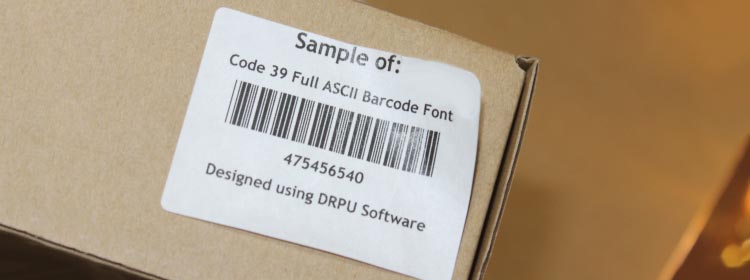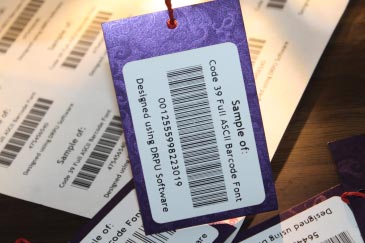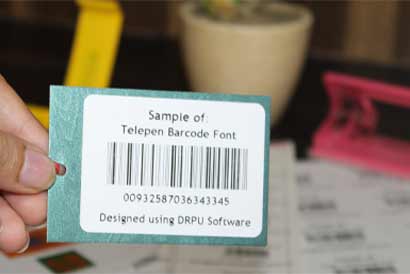Related Articles
-
The Full ASCII barcode is based on the Code 39 barcode symbology, which is a linear or one-dimensional barcode that uses a series of wide and narrow bars to encode information. Like other Code 39 barcodes, Full ASCII barcodes are easy to read and decode, and can be scanned using a variety of barcode readers, including handheld scanners and fixed-mount scanners.
-
However, there are also some limitations to using Full ASCII barcodes. One limitation is that Full ASCII barcodes are not as widely supported as other barcode types, which can make it difficult to find compatible barcode readers and software. Additionally, Full ASCII barcodes require more space than other barcode types, which can be a disadvantage when working with limited space or smaller items.
-
In addition to the standard ASCII character set, Full ASCII barcodes are also capable of encoding a number of special characters, including control characters, punctuation marks, and mathematical symbols. This makes Full ASCII barcodes a versatile and flexible solution for encoding a wide range of data.
-
For example, to encode the ASCII character "A" in a Full ASCII barcode, the shift character "%", followed by the Code 39 character "U" would be used. Similarly, to encode the ASCII character "!" in a Full ASCII barcode, the shift character "$", followed by the Code 39 character "0" would be used.
-
One of the main advantages of Full ASCII barcodes is their ability to encode a large amount of data in a relatively small amount of space. This is because each character in a Full ASCII barcode is represented by two Code 39 characters, which allows for a greater number of characters to be encoded in a single barcode. Additionally, Full ASCII barcodes are easy to print and reproduce, and can be printed on a wide range of materials, including paper, plastic, and metal.
-
To encode the full ASCII character set, Full ASCII barcodes use a combination of two characters to represent each ASCII character. The first character is always a special character known as the shift character, which indicates that the following character is an ASCII character rather than a standard Code 39 character. The second character represents the actual ASCII character, and is encoded using the standard Code 39 character set.
In conclusion, Full ASCII barcodes are a powerful and flexible solution for encoding a wide range of data, including the full ASCII character set. While there are some limitations to using Full ASCII barcodes, their ability to encode a large amount of data in a relatively small amount of space makes them a popular choice for industries where accurate and efficient data tracking and management is essential.
Applications of Full ASCII Barcode
Full ASCII barcode, also known as Code 128, is widely used in various industries for inventory and asset tracking, logistics and transportation, healthcare, retail, and many more. Its versatility and ability to encode large amounts of data make it a popular choice for businesses that require a reliable and efficient barcode system.
Here are some of the applications of Full ASCII barcode:
- Inventory and Asset Tracking:
Full ASCII barcode is widely used in warehouses, distribution centers, and manufacturing plants to track inventory and assets. By scanning a barcode, workers can easily identify the product, its location, and any other relevant information, such as the date of manufacture or expiration.
- Logistics and Transportation:
Full ASCII barcode is used in the logistics and transportation industry to track shipments and packages. By scanning a barcode, workers can easily identify the destination, the contents of the package, and any other relevant information..
- Healthcare:
Full ASCII barcode is used in the healthcare industry to track patient information, medication, and medical equipment. By scanning a barcode, healthcare professionals can easily access a patient's medical history, medication list, and other critical information.
- Retail:
Full ASCII barcode is used in retail stores to track inventory, pricing, and sales. By scanning a barcode, sales associates can quickly retrieve product information, such as price, size, and color.
- Government:
Full ASCII barcode is used by government agencies to track assets, documents, and other information. By scanning a barcode, government employees can easily access information about a particular asset or document.
- Entertainment:
Full ASCII barcode is used in the entertainment industry to track tickets and admission to events. By scanning a barcode, event organizers can easily verify the authenticity of a ticket and track attendance.
- Banking and finance:
Full ASCII barcode is used in the banking and finance industry to track checks and other financial documents. By scanning a barcode, bank employees can easily access information about the account holder and the transaction.
Overall, Full ASCII barcode is a versatile and reliable solution for businesses in various industries that require a fast and efficient way to track and manage data. Its ability to encode large amounts of data and its flexibility make it an excellent choice for companies of all sizes.
Download Barcode Software
DOWNLOADStructure of a Full ASCII Barcode
The structure of a Full ASCII barcode, also known as Code 128, is a bit more complex than other barcode types, but it is designed to ensure accuracy and reliability. Here is a detailed explanation of the structure of a Full ASCII barcode:
- Start Code:
Every Full ASCII barcode begins with a start code, which consists of three bars and three spaces. The start code signals to the scanner that a barcode is present and helps it to identify the type of barcode.
- Code Set:
The Code Set is a set of codes used to represent different characters in the barcode. Full ASCII barcode uses three Code Sets: Code Set A, Code Set B, and Code Set C. Each Code Set can represent different characters, and the scanner must know which Code Set to use to decode the barcode correctly.
- Data Characters:
The Data Characters are the actual characters encoded in the barcode. They can be any ASCII character, including numbers, letters, and special characters. The characters are encoded in groups of one, two, or three, depending on which Code Set is being used.
- Check Digit:
The Check Digit is a single digit that is added to the barcode to help ensure accuracy. The check digit is calculated based on a specific formula, and the scanner can use it to check that the barcode was read correctly.
- Stop Code:
The Stop Code marks the end of the barcode and consists of one bar and one space.
Overall, the structure of a Full ASCII barcode is designed to ensure accuracy and reliability. The use of different Code Sets allows the barcode to encode a wide range of characters, and the addition of a check digit helps to ensure that the barcode is read correctly. By understanding the structure of a Full ASCII barcode, businesses can create and decode barcodes more effectively and efficiently.
Advantages of Using Full ASCII Barcode

Full ASCII barcodes, also known as Code 39 barcodes, are widely used in a variety of industries for inventory tracking, asset management, and product identification. They offer several advantages over other types of barcodes, including ease of use, compatibility with existing systems, and versatility. In this essay, we will discuss the advantages of using Full ASCII barcodes in more detail.
-
Compatibility:
Full ASCII barcodes are compatible with a wide range of hardware and software systems, making them an ideal choice for companies that have already invested in barcode scanning technology. Many barcode scanners and software packages are specifically designed to work with Code 39 barcodes, and these systems are widely available and easy to use.
In addition, Full ASCII barcodes can be printed on a variety of surfaces, including paper, plastic, and metal. They can also be printed in a range of sizes, allowing them to be used on small items like jewelry tags, or on large items like shipping containers.
-
Ease of Use:
Full ASCII barcodes are easy to read and decode using barcode scanning technology. They can be scanned quickly and accurately, even in low light conditions or at a distance. This makes them ideal for applications where speed and accuracy are important, such as in retail inventory management or logistics tracking.
In addition, Full ASCII barcodes can be printed using a standard printer and barcode software, which means that companies can easily generate their own barcodes without the need for specialized equipment or software. This makes it easy for small businesses or individuals to use Full ASCII barcodes for tracking products or assets.
-
Cost-effectiveness:
Full ASCII barcodes are a cost-effective solution for tracking products and assets. They can be printed using standard printers and software, which means that there is no need for specialized equipment or software. In addition, they can be scanned using widely available barcode scanners, which are also cost-effective and easy to use.
In addition, Full ASCII barcodes can be printed on a wide range of surfaces, which means that there is no need to purchase specialized barcode labels or tags. This makes them an ideal choice for small businesses or individuals who need to track products or assets on a budget.
-
Security:
Full ASCII barcodes can be used to encode security features like serial numbers, lot numbers, and expiration dates, which can help prevent fraud and counterfeiting. For example, a company can use Full ASCII barcodes to encode unique serial numbers on their products, which can be used to track the product through the supply chain and ensure that it is not counterfeit.
In addition, Full ASCII barcodes can be printed using a range of security features like holographic overlays or tamper-evident materials, which can help prevent unauthorized access or tampering. This makes them an ideal choice for applications where security is important, such as in pharmaceuticals or high-value assets.
-
Versatility:
Full ASCII barcodes can encode both alphanumeric and special characters, making them a versatile choice for companies that need to track a wide range of products or assets. They can encode letters, numbers, and symbols like ampersands, hyphens, and slashes, and can be used to encode information like serial numbers, lot numbers, and product descriptions.
In addition, Full ASCII barcodes can be used to encode variable-length data, which means that the length of the barcode can be adjusted to accommodate the amount of information being encoded. This makes them ideal for applications where the amount of information being tracked may vary, such as in product manufacturing or asset management.
In conclusion, Full ASCII barcodes offer several advantages over other types of barcodes. They are compatible with a wide range of systems, versatile, easy to use, secure, and cost-effective.

